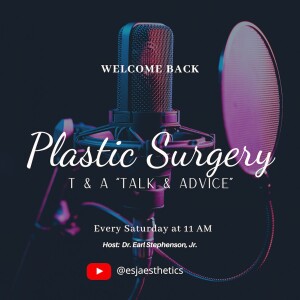
When Implants Turn Toxic: Stories of Breast Implant Illness (BII) & Breast Implant-Associated Anaplastic Large Cell Lymphoma (BIA-ALCL)
In this episode, we delve into a pressing and sometimes misunderstood topic within the world of plastic surgery: Breast Implant Illness (BII) and Breast Implant-Associated Anaplastic Large Cell Lymphoma (BIA-ALCL). The conversation around these conditions is growing, and we’re here to give you the most accurate, research-based, and patient-focused information.
What You’ll Learn in This Episode:
We aim to provide a comprehensive look into BII and BIA-ALCL by covering key areas that every patient and provider should know:
1. Definitions & Understanding the Basics: We define Breast Implant Illness (BII) and Breast Implant-Associated Anaplastic Large Cell Lymphoma (BIA-ALCL) to help viewers understand the difference between these conditions and why they’re getting more attention today. Learn what BII symptoms can include and how BIA-ALCL is a distinct but rare cancer affecting individuals with textured breast implants.
2. Risk Factors: While the direct causes of BII are still under investigation, we’ll discuss potential contributing factors and who may be at greater risk of developing symptoms. We’ll also explain the known risk factors for BIA-ALCL, including the type and surface texture of implants.
3. Physical Examination and Diagnosis: Detecting these conditions early is crucial. We’ll explore the symptoms that patients report, from systemic symptoms like fatigue and joint pain in BII, to localized symptoms such as swelling or lumps for BIA-ALCL. We also discuss what a thorough physical examination entails and how healthcare professionals approach these cases.
4. Detection Techniques: Understanding the diagnostic process is vital for patients who suspect they may have BII or BIA-ALCL. We break down the various methods used for detection, including imaging techniques, blood tests, and biopsies, and when they should be applied. This segment provides valuable insight into what to expect during the diagnostic phase.
5. Treatment Options: Once diagnosed, what comes next? We discuss the various treatment approaches for both BII and BIA-ALCL. For BII, this may involve explantation surgery, while BIA-ALCL often requires a combination of surgery and specialized care. We’ll provide an overview of the recovery process and what patients need to know.
6. Incidences and Current Research: Although rare, it’s essential to be aware of the frequency of these conditions. We’ll share statistics and current research trends, giving viewers a better understanding of the numbers and ongoing studies within the medical community to improve outcomes and awareness.
At ESJ Aesthetics, we believe in empowering our patients with knowledge and transparency. If you have concerns about your implants or simply want to know more, our practice offers both in-person consultations and virtual consultations to help you get the care and guidance you need.
📍 Our Office: 1730 Mount Vernon Rd.
Suite A Dunwoody, GA 30338
📞 Phone Number: 770-466-4700
🌐 Website: www.esjaesthetics.com
No comments yet. Be the first to say something!